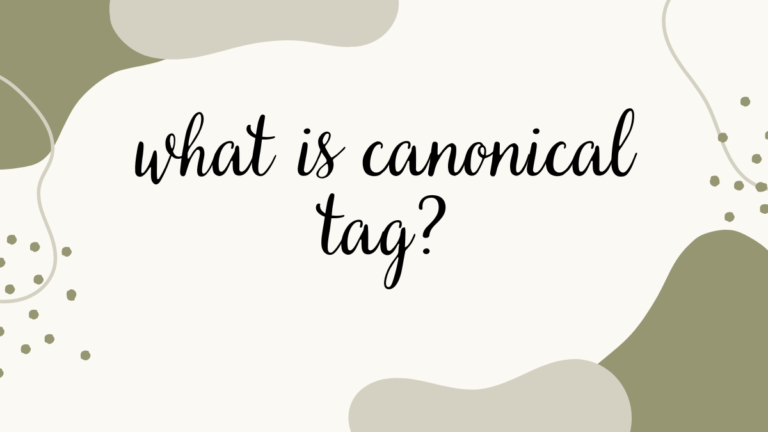Competitor Analysis In SEO
Are you tired of being outranked by your competitors in search engine results? Are you looking for a way to gain an edge and dominate your industry online? Look no further! In this blog post, we will dive deep into the world of competitor analysis in SEO.
Discover how analyzing your competition can unlock hidden opportunities, unveil their strategies, and help you surpass them on the digital battleground. So grab a pen and paper because it’s time to uncover the secrets of successful SEO through competitive analysis!
Table of Contents
What is Competitor Analysis?
Competitor analysis is the process of analyzing a competitor’s online presence and determining its strengths and weaknesses. By understanding your rivals, you can improve your own website’s SEO.
There are several methods for competitor analysis, but the most common approach is to analyze the websites’ content, layout, design, and features. You can also analyze how well each site ranks in search engine results pages (SERP), look for common keywords or phrases that are being used more frequently on each site, and compare website traffic data.
By understanding your rivals, you can improve your own website’s SEO by doing things like creating content that is similar to what they are publishing, using similar design elements and keywords, or increasing website traffic through strategic marketing efforts.
Types of Competitor Analysis
There are many different types of competitor analysis that can be used in SEO. This includes analyzing the competition’s website architecture, content strategy, and copywriting. Additionally, you can analyze their SEO techniques and how well they’re performing.
- Website Architecture: You can analyze a competitor’s website architecture by looking at the design, layout, and structure. This will give you an idea of how well they’ve planned their website and how effective their design is.
- Content Strategy: You can also analyze a competitor’s content strategy by looking at what topics they cover, the length of their articles, and the keywords they’re targeting. This will help you to see where they’re excelling and where you can improve your own content strategy.
- Copywriting: You can also analyze a competitor’s copywriting by looking at how clear their writing is, whether or not they target keyword density correctly, and whether or not they use any contextual keywords. By understanding how well their competitors are writing, you’ll be able to improve your own writing skills as well.
- SEO Techniques: You can also analyze a competitor’s SEO techniques by looking at their website’s SERP rankings, their backlinks, and their domain authority. By understanding how well they’re performing, you’ll be able to improve your own SEO strategy.
All of these different types of competitor analysis can be useful in order to improve your SEO efforts. By understanding how well your competitors are performing, you can learn what needs to be improved on your own website in order to compete.

How to Do Competitor Analysis?
- There are a few ways to do competitor analysis in SEO. One way is to look at the domains that your competitors are ranking for and see what keywords they are targeting. You can also use tools like SEMrush or Ahrefs to see which keywords your competitors are ranking for, how much traffic they’re getting from those keywords, and how much money they’re earning from them.
- Another way to do competitor analysis in SEO is to look at the websites that your target market is visiting. For example, if you sell shoes, you can look at sites that are selling shoes nearby or sites that have a similar audience to yours. This information can help you figure out which keywords to target and how to go about optimizing your content for those keywords.
- Finally, you can use competitor analysis to see which of your competitors is doing better than you. For example, if you sell shoes online, you can look at how many sales each competitor is making and figure out what strategies they’re using that are working for them.
What to Look for When Doing Competitor Analysis?
When doing competitor analysis, it’s important to consider a variety of factors, including:
- What are the company’s core services?
- What are the company’s main competitors?
- What are the company’s key strengths and weaknesses?
- How well does the company execute its services compared to its competitors?
- How aggressive is the company in terms of marketing and advertising?
- Is the company committed to innovation and developing new services?
- How responsive is the company to customer feedback? -What is the company’s overall reputation?
- What are the company’s financial stability and prospects? -What is the company’s leadership team composition and experience?
- What is the company’s culture like?
- What are the company’s policies and procedures regarding employee training and development? What are the company’s policies and procedures regarding customer service?
- What are the company’s policies and procedures regarding billing and payment?
- What are the company’s policies and procedures regarding inventory?
- What are the company’s policies and procedures regarding transportation?
- What are the company’s policies and procedures regarding outsourcing?
- What are the company’s competitive advantages?
- What are the company’s key strategies?
- What are the company’s key strengths and weaknesses?

What to Do With the Information Gained from Competitor Analysis?
There are a few things you can do with competitor analysis information in SEO.
- The first is to use it to improve your own site.
- Second, you can use it to improve the sites of your competitors.
- Third, you can use it to determine where your site might need improvement.
- Fourth, you can use it to help target your advertising.
- Fifth, you can use it to help create or improve content on your site.
- Sixth, you can use it to assess where market opportunities may exist for your business or products. You can use it as input into strategic planning activities.
Each of these uses of competitor analysis information is discussed in more detail below.
Use Competitor Analysis Information to Improve Your Site:
- One way to use competitor analysis information to improve your site is to identify where you are falling short in comparison to your competitors. You can then work to address those areas on your site in order to improve your ranking and visibility.
- You can also use competitor analysis information to improve the design of your website. By understanding how your competitors are designed, you can make appropriate changes to improve the look and feel of your own site. This will likely result in an improvement in rankings and visibility as well.
Use Competitor Analysis Information to Improve the Sites of Your Competitors:
- Another way to use competitor analysis information is to identify where they are performing well and where they may be lagging behind. This will help you target your advertising efforts accordingly and potentially gain an advantage over your rivals.
- You can also use competitor analysis information to determine where people are looking for specific information or products. By understanding what customers want, you can create content that resonates with them and results in increased traffic and revenue.
Use Competitor Analysis Information to Determine Where Your Site Needs Improvement:
Finally, you can use competitor analysis information to help you determine where your site might need improvement. By assessing where your rivals are strong and weak, you can identify where your site may need additional work. This information can then be used to create a plan of action that will improve your rankings and visibility.
Competitor Analysis Can be Useful in Many Ways
Competitor analysis can be extremely useful in a variety of ways when it comes to SEO. By using competitor analysis information to improve your own site, you can gain an edge over your rivals.
By using competitor analysis information to improve the sites of your competitors, you can gain an advantage over them in the market. And by using competitor analysis information to determine where your site may need improvement, you can take the necessary steps to achieve success.
Conclusion
In this article, we have outlined the steps involved in competitor analysis in SEO. By understanding your competitors and their tactics, you can better plan your own strategies and improve your website’s ranking.
In the ever-changing SEO landscape, it is important to stay up-to-date on the latest trends so that you can continue to dominate your field.
While competitor analysis can be time-consuming, it is an essential part of any SEO strategy. By understanding your opponents, you can create a more effective marketing plan and achieve greater success in the competitive landscape.





